We may receive a commission when you use our affiliate links. However, this does not impact our recommendations.
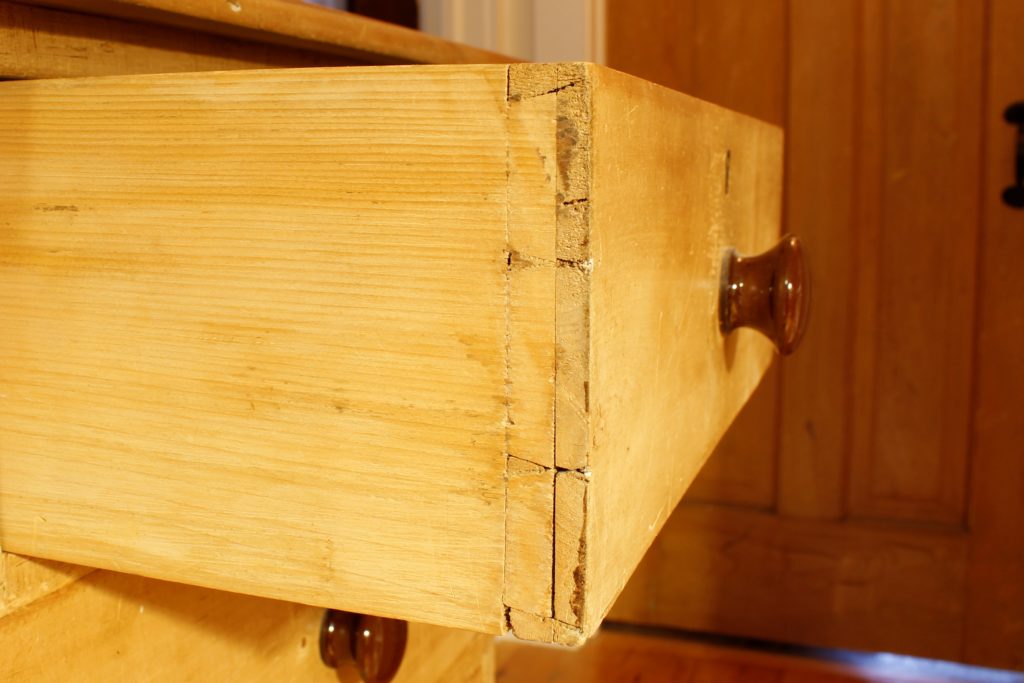
Beautifully imperfect
I’ve long been fascinated by handmade utility furniture: the kind of stuff made to be used, not admired for the craftsmanship invested in its production. In the early 1980s, I bought an old chest of drawers from an antique shop in Reading, a large industrial town southwest of London, where I lived at the time. It was made of a nondescript softwood known as deal and had originally been painted. I say “originally” not only because it was clear from vestiges of remaining paint that it had at one time been painted, but because the wood was distinctly paint-grade in quality, with numerous knots and splits.
By the time I bought the piece it had been stripped by dipping in methylene chloride, a method of paint removal that is not only hard on wood but also on strippers (i.e., those who work with the chemical) — in fact, so hard on them that it has since been banned, at least in the United States. I love this dresser because it was one of the first nice pieces of furniture I owned, and also because of its imperfections. It’s an intriguing blend of rough and fine work, with hand-cut dovetails that taper to needle-fine points, yet also have kerfs that go past the layout lines. The drawer rails are joined to the cabinet sides by hand-cut sliding dovetails, yet the moulding around the top, and the top itself, are simply nailed on. The drawer bottoms are solid wood, yet the guides between the two top drawers are simply glued in place. I consider this piece a reminder that even when my joints aren’t perfect, they may still perform the work for which they were intended. The entire dresser is a lesson in the beauty of humility. Here’s a quick tour.
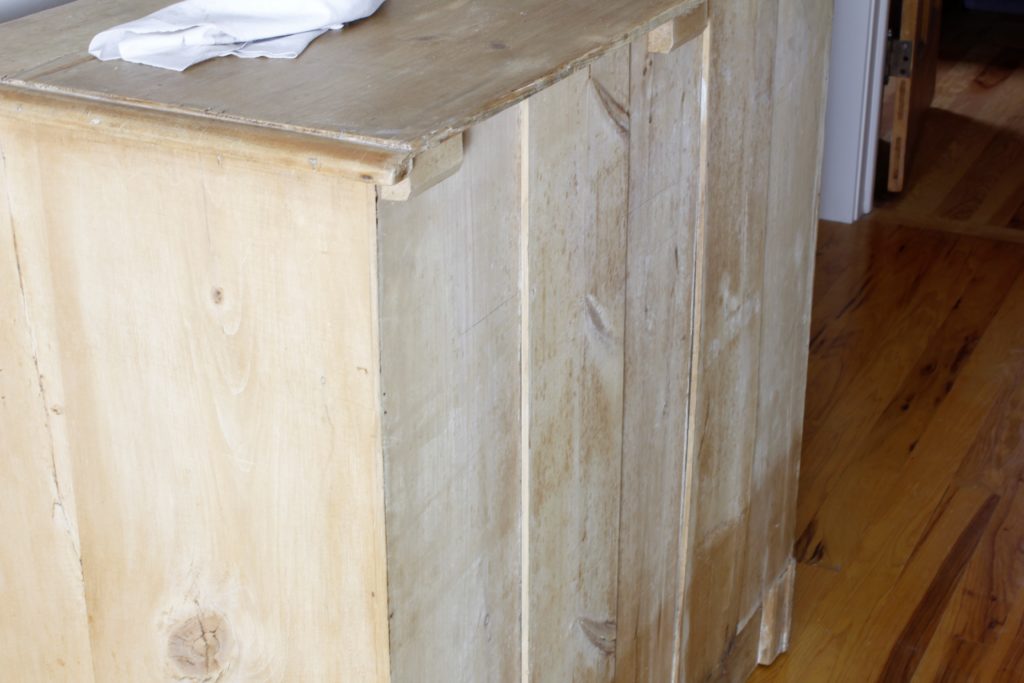
The back of the cabinet is solid wood…but it’s simply nailed in place without so much as a rabbet to conceal it at the sides.
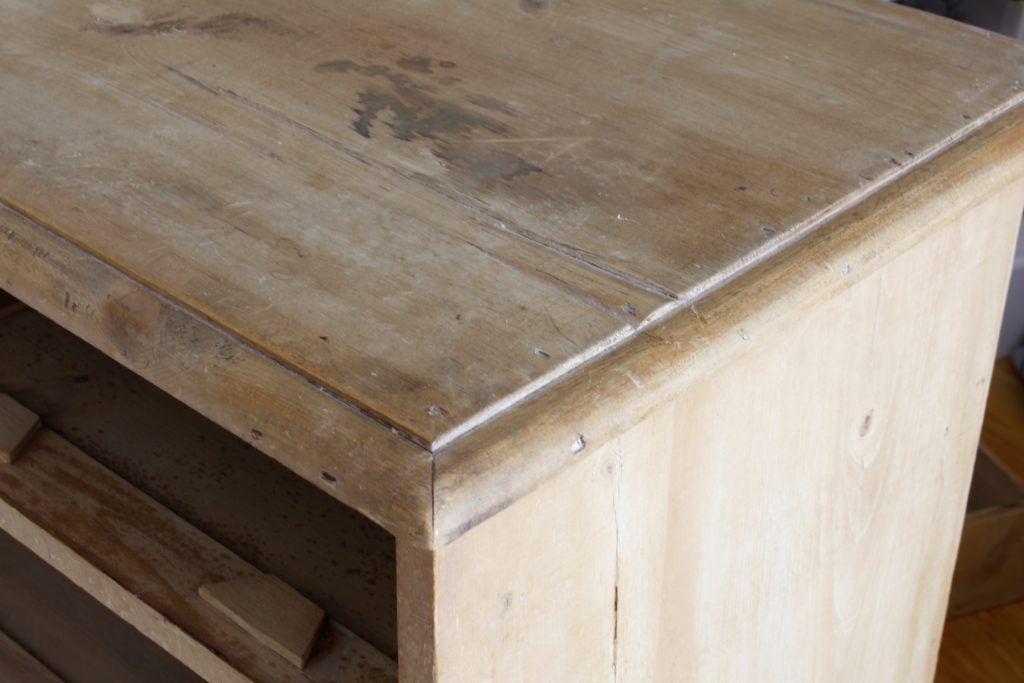
The carcase top is nailed to the sides, and the moulding around it, too, is nailed in place.
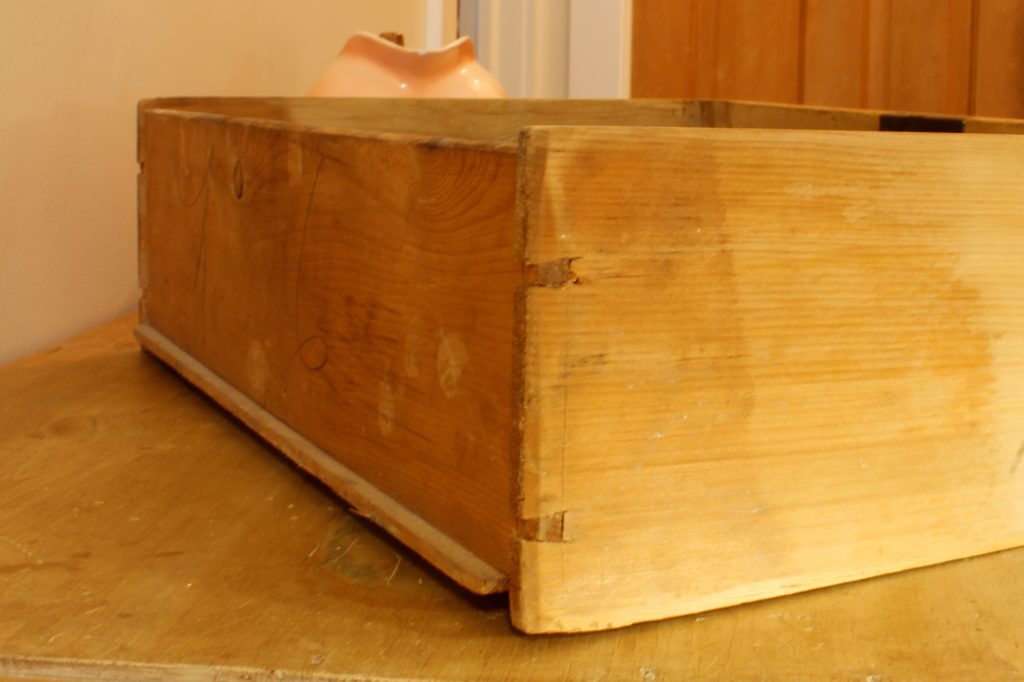
Handcut dovetails…but check out those less-than-neat kerfs extending beyond the layout lines.
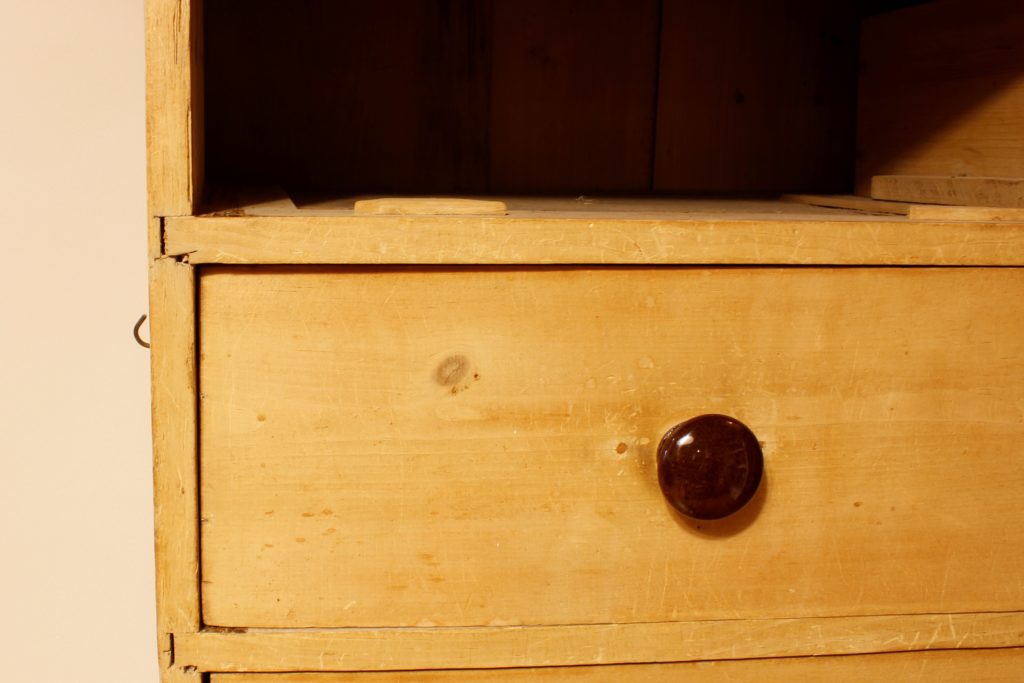
The drawer rails are joined to the cabinet sides by sliding dovetails. Not perfect, but even decades after their original glue was removed by dip stripping, they hold the piece together.
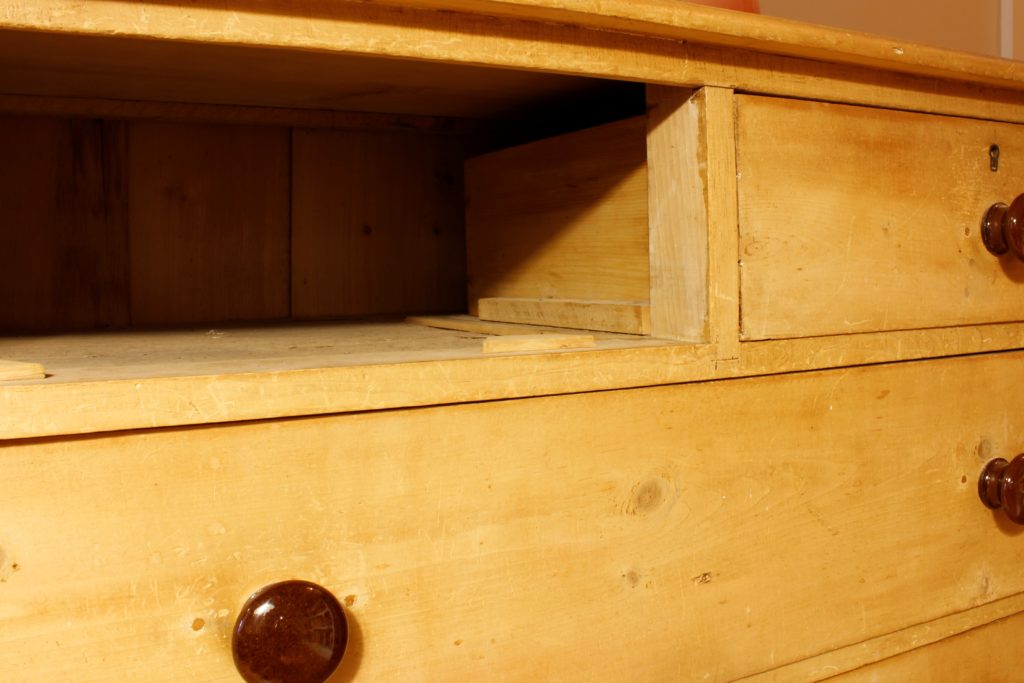
The dresser has solid wood dustboards held in grooved runners, yet the guide between the two top drawers is a simple piece of butt-joined wood.
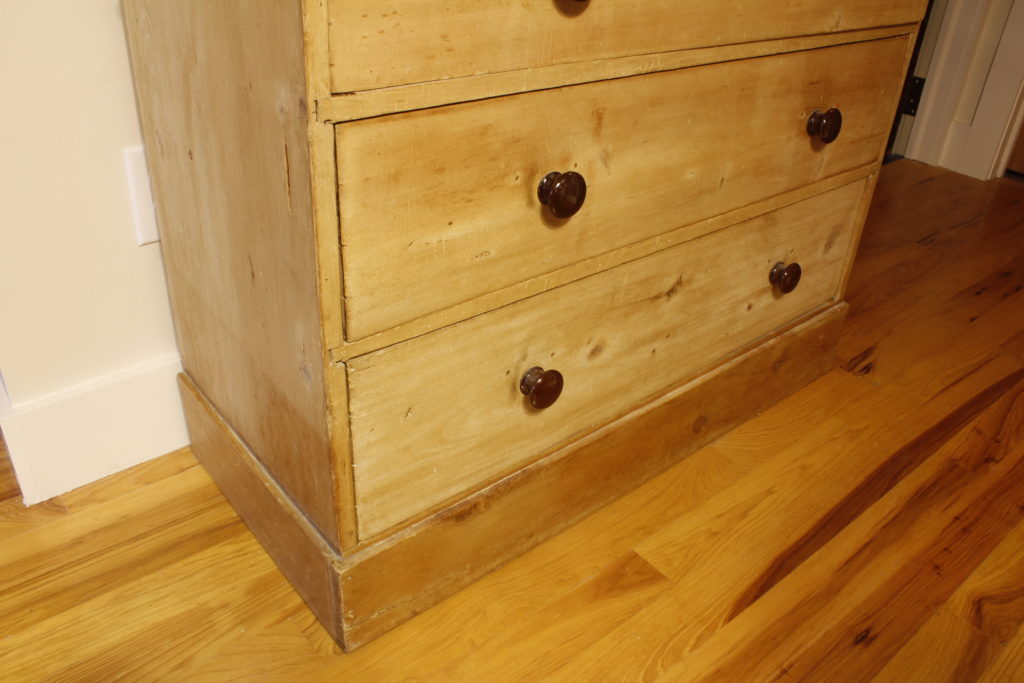
Like the top and the moulding around its edges, the plinth is butt-joined and nailed together.
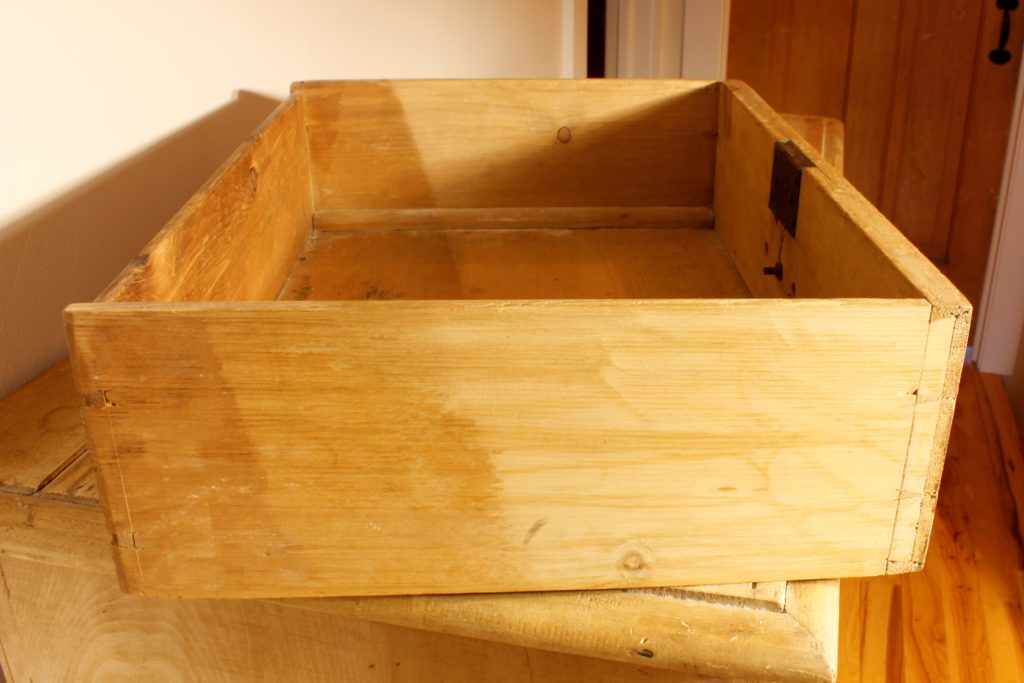
Handcut dovetails at front and back, but…not perfect. And yet they’ve stood the test of time.
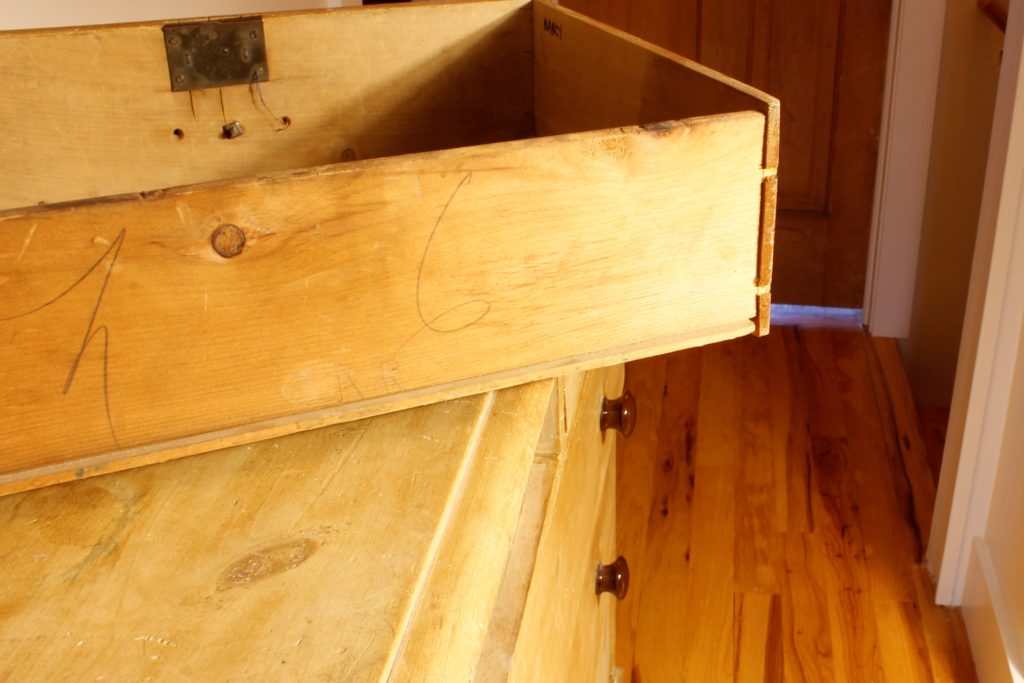
Lovely old cabinetmaker’s marks
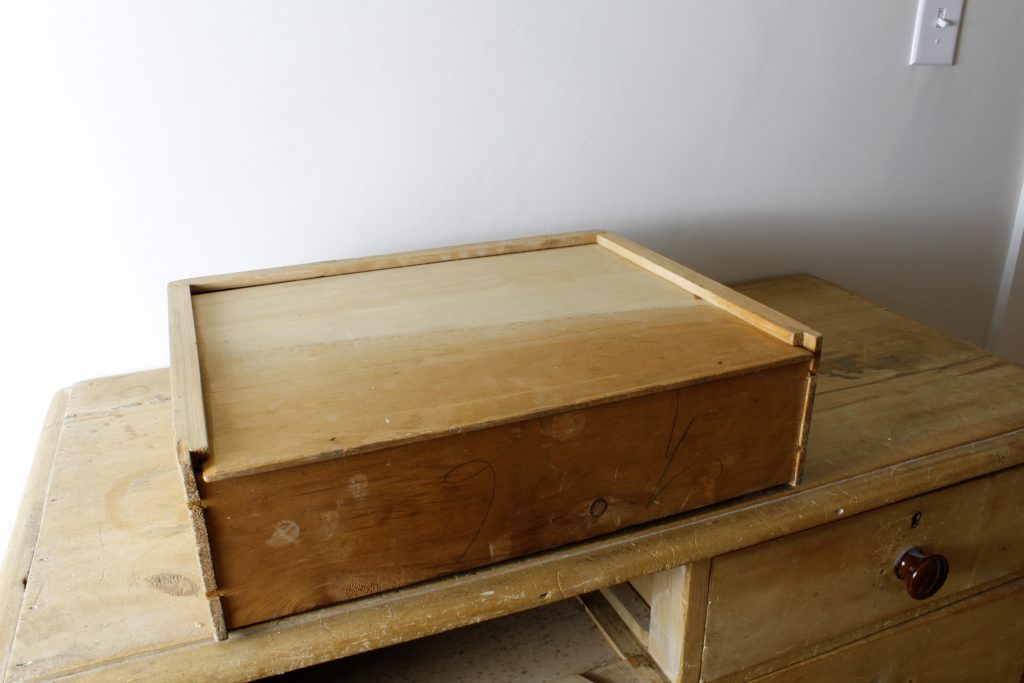
The solid drawer bottoms are held in slips.
– Nancy Hiller
Here are some supplies and tools we find essential in our everyday work around the shop. We may receive a commission from sales referred by our links; however, we have carefully selected these products for their usefulness and quality.










Thanks, Nancy. I have an old washstand that was made in the same spirit. It has encouraged me to produce useful furniture while learning woodworking rather than trying to perfect skills before building something.
Nancy,
I have one similar, made in Kansas and our family always called it prairie furniture. Build tough and ready for the wagon to move.
This aesthetic is falls into the Japanese description of Wabi Sabi. Nothing is perfect, age gathers value, and nothing stays the same. I used that with my Landscape clients to explain gardens as being living art. Here is the Wikipedia definition for a starter.
https://en.m.wikipedia.org/wiki/Wabi-sabi